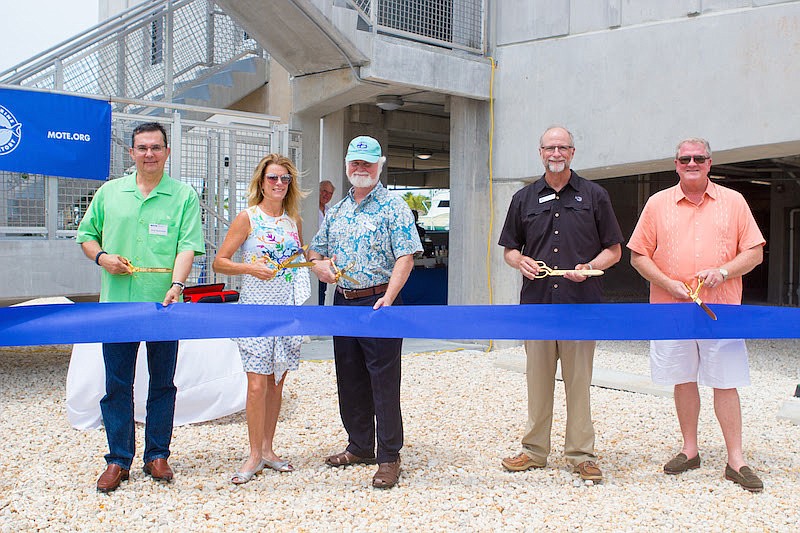- April 19, 2024
-
-
Loading

Loading

Mote Marine Laboratory finally cut the ribbon on its long-awaited new research facility in Summerland Key on May 25.
More than 100 people, including Mote scientists, trustees, supporters and community leaders, attended the invitation-only ribbon cutting and open house for The Elizabeth Moore International Center for Coral Reef Research and Restoration building. The building more than doubles Mote’s previous space for coral research and restoration efforts, a statement from Mote said.
The facility, known as IC2R3, will be home to advanced coral reef researching using new seawater systems, raceways and experimental tanks for studying multiple reef species facing climate change impacts.
The new facility was named after Elizabeth Moore, one of the first lead donors to the facility who increased her support in spring 2017. Moore and other donors covered a majority of the $7 million in construction and installation of scientific structure.
“Coral reefs are a source of wonder, prosperity and thriving biodiversity — I know it, my family knows it, Mote scientists know it, and together we aim to keep it that way,” Moore said in the statement from Mote.. “Mote scientists are working to restore reefs, using science-based strategies that take into account global challenges such as climate change, and they are forging international partnerships so their innovations can benefit reefs far and wide. It is an honor to support Mote’s work that is creating positive impacts around the world, and I hope others will be motivated to get involved.”
The building also includes the Alfred Goldstein Institute for Climate Change Studies. The Alfred and Ann Goldstein Foundation supports the building’s infrastructure and studies of the impacts of climate change on coral reef ecosystems and restoration, Mote’s statement said.
“I couldn’t be more excited that this building is now officially open to scientists,” said Dr. David Vaughan, Executive Director of IC2R3, in the statement. “Now we have a greater capability to share the innovative technology developed here at Mote with other talented scientists throughout the world. This new level of collaboration will allow us to propagate even the most challenging massive corals in large numbers in just a few years and share how we do this with the rest of the world. It’s about time we share the ‘good news’ about our coral reefs and our oceans, locally and globally.”
Historically, Mote’s Summerland Key Campus supported the work of more than 150 scientists from 60 institutions around the world per year. Now, the new facility allows this number to grow significantly, an example being a 2016 collaboration between Mote and The Nature Conservancy geared toward long-term reef restoration at unprecedented scales in Florida and the Caribbean, Mote’s statement said.